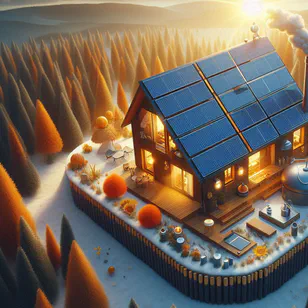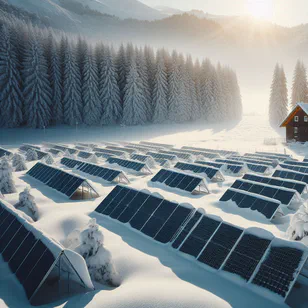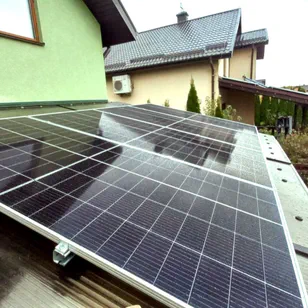Introduction
When installing solar panels, one of the key decisions is the angle at which they are tilted. The sun moves across the sky not only from east to west but also at varying heights depending on the season. It sits high in the sky during summer and much lower during the winter. In reality, the sun’s angle increases from the shortest day in December, peaks in late June, and decreases again toward the end of the year.
For optimal energy generation, solar panels should receive sunlight at a 90-degree angle, as any deviation from this reduces efficiency. Solar trackers, which are mechanical devices that adjust the angle of the panels throughout the day, provide the perfect solution for this. However, they are expensive, require maintenance, and aren’t ideal for residential properties due to their bulky appearance.
When setting up a solar power system for your home or business, you typically have two options: manually adjusting the tilt angle a few times per year or installing the panels at a universal angle suited to your region. For example, in Kyiv and its surrounding areas, 35 degrees is commonly recommended as a universal angle.
Is 35 Degrees the Best Solution?
While a universal tilt angle is a practical compromise between convenience, cost, and generation efficiency, it may not be ideal in all scenarios. For instance, it works well for grid-tied systems under a green tariff but falls short for autonomous power generation, especially during outages or for homes relying heavily on self-consumption.
The Downsides of a Universal Angle:
Snow Accumulation: A common problem in winter, snow can cover panels, reducing energy output. While it’s possible to clear the panels, climbing onto a snowy, slippery roof is a risky task. Do solar panels work in winter? Here’s a guide to help you optimize energy generation in colder months.
Summer Energy Overload: In summer, long daylight hours and less energy consumption result in energy surpluses. This often leads to inverters capping the energy generation , which wastes the system’s potential.
Winter Energy Deficit: From October to March, energy production drops, right when households need the most electricity. Learn how to calculate the number of solar panels needed for home heating during these months.
Adjusting the Tilt for Maximum Efficiency:
Given the increasing importance of autonomous energy systems, especially with rising tariffs and frequent power outages, it’s worth considering a steeper panel tilt — around 40 degrees or more. This setup maximizes energy production during winter by capturing more sunlight from a lower sun angle, while also reducing the accumulation of snow on the panels. Despite the steeper tilt, you won’t lose much in summer because the abundant sunlight will still cover your daily household needs, even if the panels aren’t at an ideal angle.
A Balanced Approach:
While optimizing the tilt is important, it’s essential to keep aesthetics in mind. Large, obtrusive structures to adjust the panel angles can detract from the appearance of your home. If modifying the tilt isn’t feasible, a simple solution is to install more panels to compensate for the lower efficiency during certain seasons.
In conclusion, while a universal angle may seem convenient, it’s not always the best choice, especially for autonomous systems. Consider a steeper angle for year-round efficiency, and remember that more panels can always help balance out any energy deficits.




